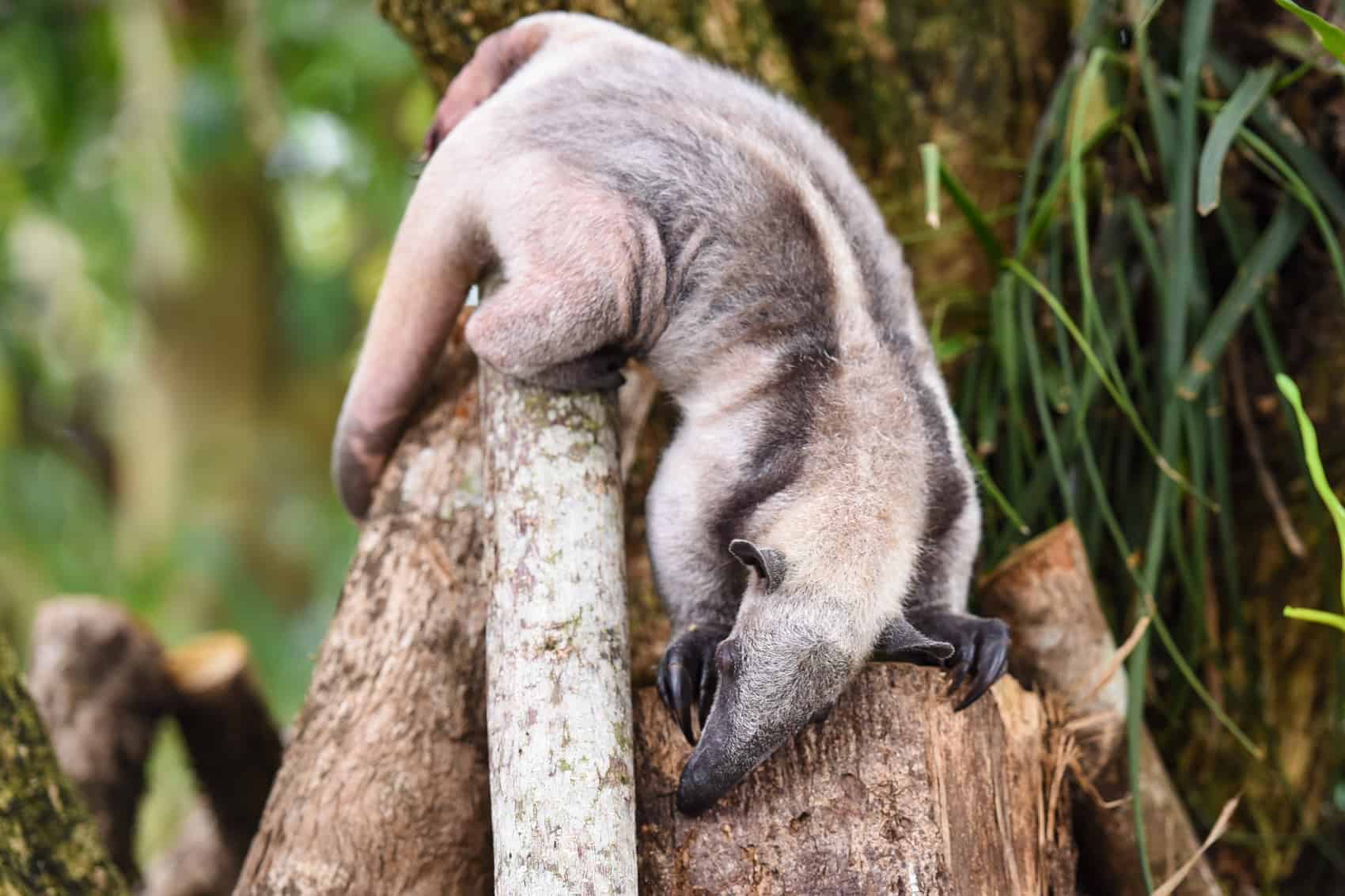A baby sloth snuggles into a basket. The sloth’s fur is white and brown, and its texture looks as soft as a freshly laundered towel. The nose is a pink button. The eyes are perfectly round, gazing curiously at its visitors. One arm extends outward, as if the baby sloth started to stretch and then forgot to retract it. Its head is upside-down, so it has the tumbled-over look of a playful kitten. It’s one of the most adorable sights nature has to offer.
But don’t take my word for it. Just look at the picture and try to keep your heart from melting. Toucan Rescue Ranch, located in the hills of San Isidro de Heredia, is a magnet for such cuddly critters, and if you only came for the furry and feathery toddlers, you would leave well satisfied.
But the place is more than a mere menagerie: True to its name, Toucan Rescue Ranch inherits scores of animals, nurses them back to health, and then releases fully recovered specimens back into the wild. The species aren’t limited to toucans, or even birds – the ranch cares for everything from anteaters to wild cats.
While there are huggable-looking mammals and avian everywhere you look, many of them arrived here under horrifying conditions. Fully grown toucans are often rescued from tiny cages, which are so confined that the birds’ bodies are beaten and bruised from their attempts to escape.
“I think the abuse cases have always been there,” says Leslie Howle, founder of Toucan Rescue Ranch. “But education is changing. Schools will teach an entire class about the rain forest.” Howle is a U.S. citizen, but she was raised in the town of Nosara, thanks to her parents’ development work. She has always loved wildlife, particularly birds.
“My parents would take me to Parrot Jungle in Florida,” she recalls. She remembers writing a report for her teacher about macaws. Howle left Costa Rica as a teenager and spent many years in the U.S. state of Nevada. One day, she went to a pet store and picked out a bird, whom she named (what else?) “Tico.” Noticing her passion for winged animals, friends started to give her birds. Soon she had a large feathered family sharing her house.
When she decided to return to Costa Rica 14 years ago, she brought the flock with her. This was no easy task: It turned out most of her pets were endangered species, and it took Howle a full year to receive permission to transport them.
Howle’s ornithophilia is what started Toucan Rescue Ranch, which she established in 2004, but an intense national need to recuperate injured or abused birds is what sustains it. For the past decade, the Environment Ministry has sent Howle all kinds of creatures – so many that she can’t even estimate the total number.
“Right now we have 150 animals,” Howle says as she ambles past sizeable cages. What is the ranch’s total capacity? “We’ve reached it,” she says with a laugh.
After all these years, the ranch is doing better than ever: Howle runs the place with her husband Jorge Murillo. They crowd-funded their new clinic through the IndieGogo platform, raising more than $10,000. They have two additional properties outside the town of Sarapiquí, one about six hectares and the other 10 hectares, which have helped expand their operations. Howle travels across the country to lecture at schools and explain the importance of respecting wildlife. Most recently, the ranch received a generous donation: a gas anesthesia machine.
“Injections are horrible for birds,” says Howle. The anesthesia machine will help with surgeries but cause no pain or languor. A veterinarian will soon fly down from the United States to train Howle to use the new appliance.
For animal lovers, the ranch is a fantastic place to visit, and even stay: The ranch has two generous cabinas, which include beds, a fully functional kitchen, and as much room as a studio apartment. To make things even sweeter, many travelers pair their ranch tour with a visit to the Sibú chocolate farm, located just down the road. The ranch receives a constant influx of tour groups – which is essential, because the organization relies on visitors.
“The tours and guest houses fund the whole place,” says Howle.
So is it relaxing working among animals in a secluded garden?
“No,” Howle laughs.
She recounts how, that very morning, two of her birds started to fight each other on the way to a presentation. Howle has taken so many species under her wing that she has to juggle feedings, medical check-ups, and visiting groups. But she seems remarkably at ease for having shouldered so much responsibility. Working with animals requires constant innovation, a demand she seems to enjoy. Howle points to one small bird in a cage. The build started to build a nest, which Howle and her small staff encouraged.
“But the nest was terrible,” she says. “The eggs just fell out.”
So Howle came up with an idea: Instead of letting the bird continue to fail in its efforts, she put a small cream cheese container in the cage. This helped the bird build a stronger nest, reinforced as it was by a small plastic bowl. Now the eggs are fully secure.
With so many baby animals gathered in a single place, visitors are inundated with cuteness. While many of these creatures arrived in pretty bad shape, the ranch has restored them to health, and nearly every one is as photogenic as a basketful of puggles.
How cute do they get? This cute:
For more information about the Toucan Rescue Ranch, visit the official website.






